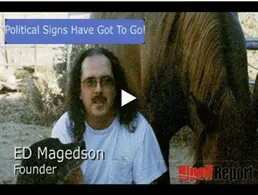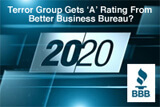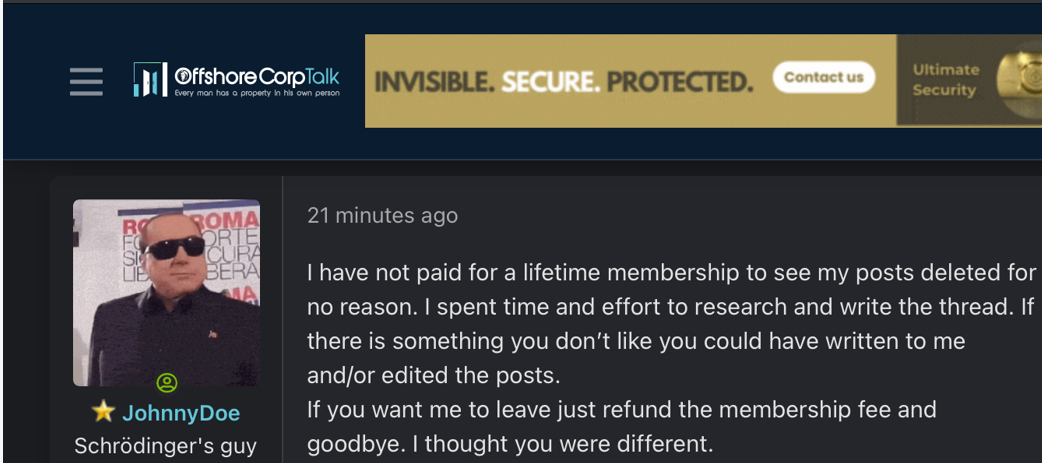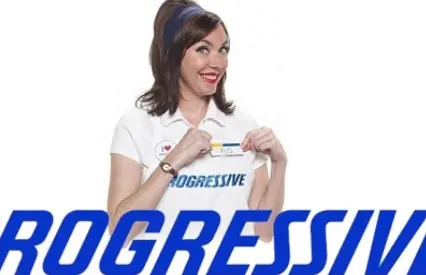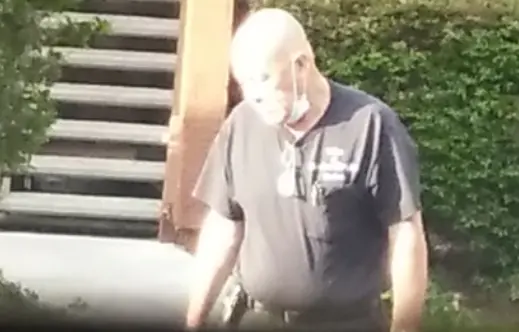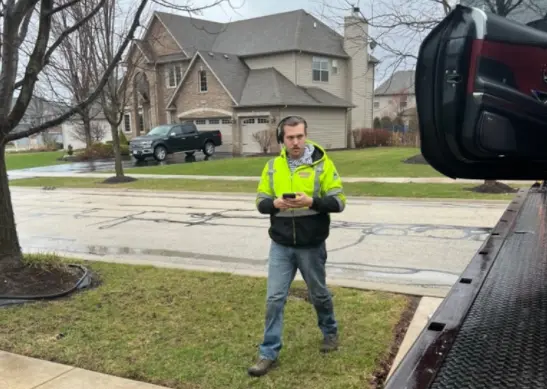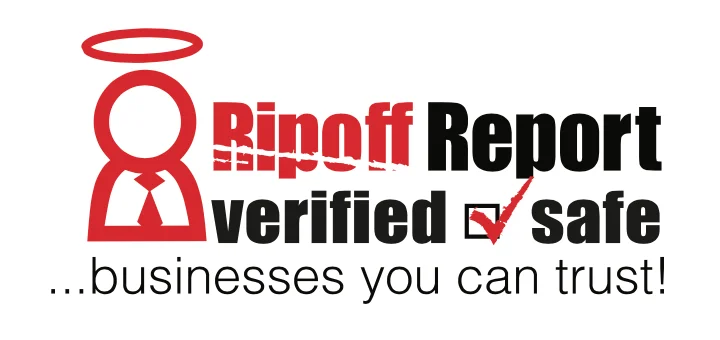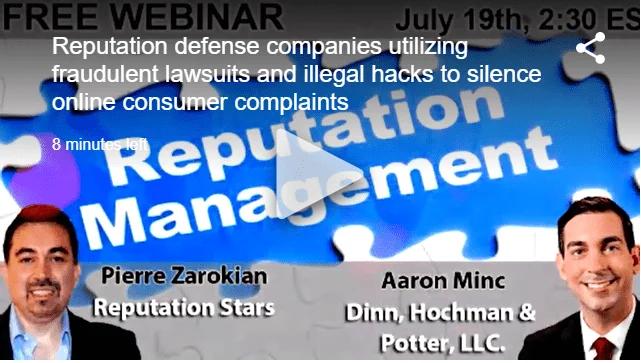Complaint Review: Robert Edward Auctions - Chester New Jersey
- Robert Edward Auctions PO Box 430,245 Main St. #113 Chester, New Jersey USA
- Phone: 908-226-9900
- Web: robertedwardauctions.com
- Category: Auctions
Robert Edward Auctions Unethical conduct and fraud Chester New Jersey
listed on other sites?
Those sites steal
Ripoff Report's
content.
We can get those
removed for you!
Find out more here.
Ripoff Report
willing to make a
commitment to
customer satisfaction
Click here now..
February 5, 2016
Dear Mr. Lifson,
My attorneys have made a financial settlement and mutual release agreement with me. This covers some of my losses and expenses. In exchange I have removed all possible negative postings and reviews of their firm and individual lawyers. In addition, I have updated the reviews, marking them as “resolved.”
If you wish to negotiate a similar settlement with me, I will offer you the same opportunity to help clear your reputation on the internet. After such settlement, my retraction shall state that you have resolved all issues between us to my complete satisfaction.
This offer shall remain in effect for ten days, after such time I will be updating my reviews.
Sincerely,
Anthony Raymond
| Share| By Peter J. Nash April 24, 2015 Last month it was revealed in court papers that former Mastro Auctions exec Doug Allen was accused by the Detroit Public Library of stealing two photos from its Ernie Harwell Collection. This month, Allen’s former partner and documented library thief, Rob Lifson, of Robert Edward Auctions in Watchung, New Jersey, is selling two photos that fit the description of items stolen from the New York Public Library and appear on its Spalding Collection “Missing List.” The list was created after library officials took an 1987 inventory of the donated Spalding photographic holdings and found that over one hundred rarities were missing including an 1879 cabinet card image of A. G. Spalding and his Chicago White Stockings and a cabinet card of the 1879 Boston team listed as “Unidentified group with Harry Wright.” The 1879 Chicago photograph is being sold by REA as “newly discovered” and was identified in the published 1922 NYPL Spalding inventory as “White Stockings of Chicago. 1870. California Team” with the names of every player identified on the cabinet mount. The date of 1870, however, was a typographical error as the White Stockings only had a California tour in 1879 and all of the players listed appear in the photograph. REA’s Boston cabinet card features the same image that NYPL officials were unable to identify in 1922 and described as “Cincinnati, Boston or Philadelphia?” for (3) photographs. Two of those items went missing from the library but the one surviving NYPL copy features the same image as the REA auction lot depicting Wright and his 1879 club. It’s been nearly 100 years since the original NYPL Spalding inventory identified the 1879 White Stockings photo as NYPL property and the example being offered by REA and its President, Rob Lifson, represents the first appearance of any photograph fitting the description of that missing Spalding treasure. In its current auction catalog Lifson and REA describe the lot as: “Exceedingly rare team cabinet card capturing eleven members of the Chicago White Stockings’ “California Tour” team in 1879, including Cap Anson and A. G. Spalding. This is the first example of this extraordinary Chicago team cabinet we have ever seen or handled….”
REA's current lot description calls the 1879 Chicago White Stocking cabinet photo a "newly discovered example" that neither REA or auction President Rob Lifson had ever handled or seen before. According to REA, the newly discovered rarity came from outside of the hobby and not from an established or well known collector. In the lot description REA details the provenance of the photo without mentioning the consignor’s identity: “This card was part of a small but very exciting new find of three nineteenth-century cabinet cards that came to us last fall. (Two of the cards, an 1878 Boston team cabinet and a 1879 White Stockings team cabinet, sold in our fall auction.) All three cards had, for decades, been in the possession of a noncollector’s family. The only time these cards have even had a “brush” with the modern collecting world was in 1989, when members of the family, curious as to what the cards were and if they had any value, decided to have them appraised. Because they lived in California, they brought them to Richard Wolfers Auctions in San Francisco and were told by a representative of the company that the cards were valuable and worth thousands of dollars. At that time, the owner decided not to sell them and instead gave them to her grandson, a young 8-year old collector who was passionate about baseball, with instructions to keep them in a safe deposit box at the bank. The grandson, our consignor, has now decided that the time has come to sell them.” REA also claims that they had seen the same image on the 19th century baseball uniform website, Threads of the Game, but what REA fails to mention, however, is that they provided the image for that same website after they acquired a digital copy from their consignor. The written description of the same 1879 Chicago photograph has been accessible in the published inventory of the Spalding Collection since 1922.
The REA auction lot of the 1879 Chicago cabinet fits the description of an item listed in the 1922 NYPL Spalding inventory and the 1987 "Missing List" created after losses were discovered by NYPL officials. Considering the fact that REA’s Rob Lifson has claimed in the past to have handled more rare cabinet cards and CDV’s than any other dealer or auctioneer, the fact that he says he’s never seen this cabinet photo should at least open up a dialogue as to how his consignor’s family acquired the rare photograph? In addition, considering the fact Lifson, himself, was apprehended stealing CDV’s and cabinet cards from the NYPL’s Spalding Collection in 1979, it should also be addressed why he never mentioned the documentation of the missing NYPL copy in his lot description? Could lot number five in REA’s “blockbuster” Spring auction be A. G. Spalding’s missing “California Team” treasure?
Dealer Rhys Yeakley sold this "1915 re-shoot of the original" 1879 White Stockings photo. Unlike the REA auction lot, this image appears to be from a larger 'Imperial' size photo. (Photo courtesy of Rhys Yeakley) Although REA fails to identify or mention the existence of the missing NYPL example, this writer has been aware of the photographic image since 2009 when a copy of the 1879 photo was forwarded to the FBI and included in a 300-page report detailing the library heist in the 1970’s and the whereabouts of scores of stolen Spalding artifacts. At the time, memorabilia dealer Rhys Yeakley of Prewarsports.com had offered on his website what he described as a “1915 re-shoot” of one of the original 1879 albumen prints depicting Spalding’s “California Team.” Yeakley’s offering of the 1879 team photo provided the NYPL and the FBI a visual representation of the missing artifact and at the time was the only known resource to document what investigators needed to look for in the NYPL recovery process. The image captured on the 2nd generation print appears to be an Imperial size cabinet much larger than the example being offered by REA. When we asked Yeakley if he could recall where his photo originated he told us, “I think it came from the Helms Museum when that collection was being sold on eBay maybe 5-6 years ago.”
In 2009 an image of the 1879 Chicago cabinet was submitted to the FBI and NYPL in a report (left) documenting the thefts. The report was submitted after the NY Times (right) reported that Spalding items were offered in an MLB auction. The FBI investigation was commenced when a “rare cache” of 19th century letters sent to baseball pioneer Harry Wright appeared in a 2009 MLB All Star Game auction. The letters were once part of several scrapbook volumes of Wright’s correspondence that vanished from the NYPL in the 1970s and the New York Times published several articles quoting historian Dorothy Seymour Mills who confirmed that several letters in the sale were cited by her and her late husband in published works. Since 2009 the FBI has been investigating the NYPL thefts and has attempted to recover items with Spalding Collection provenance but they have been highly unsuccessful in their recovery efforts. To date the NYPL has only recovered a handful of thousands of stolen items that are now in private hands.
Lifson & REA have sold items stolen from NYPL's Spalding Collection: (Top Row l to r) 1872 signed Warren CDVs of Geo. Wright, Ross Barnes and Cal McVey; 1875 Hartford BBC CDV; Andrew Peck signed cabinet card (Second Row l to r) Harry Wright cabinet cards by MacIntire, Randall & Warren; Alexander Cartwright Tabor cabinet photo; 1874 AG Spalding letter to Harry Wright (Third Row l to r) 1889 Geo Stallings letter to Wright; 1873 Boston BBC CDV, Rob Lifson, Barry Halper (Bottom Row) Knick Challenge letters from Excelsior, Star and Hamilton teams. While Lifson is the only individual ever apprehended stealing artifacts from the NYPL’s Spalding Collection, his company, Robert Edward Auctions, has also sold more items documented as being stolen from the NYPL than any other auction house. The 1999 Halper Collection sale at Sotheby’s actually contained more stolen items but Lifson also oversaw that sale as Sotheby’s hand-picked consultant in-charge. Lifson wrote up the lot descriptions and handled scores of stolen item that were being sold by his long-time associate and top client, New York Yankees partner Barry Halper. When Lifson first opened his auction house in 1991 he advertised his knack to “unearth rare baseball items” but is it a coincidence that so many items matching descriptions of missing Spalding items have made their way into his auctions? That being said, there is also another rarity being sold in Lifson’s current auction that fits the description of an additional NYPL missing artifact featuring Harry Wright.
REA describes another 1879 cabinet card in its auction as "One of the most extraordinary nineteenth-century team cabinets we have ever seen! This is the only example of this team cabinet we have ever seen, let alone handled.". Originating from what REA calls a different consignor is an 1879 cabinet card of Wright’s Boston Red Stockings that REA and Lifson describe as: “One of the most extraordinary nineteenth-century team cabinets we have ever seen! This is the only example of this team cabinet we have ever seen, let alone handled (though from collectors we are aware of the existence of at least one other example in damaged condition)…” It’s yet another example of REA receiving an ultra-rare consignment that fits the description of a photograph missing from the Spalding Collection. The 1922 library inventory identifies three photographs as “Unidentified group with Harry Wright” and baseball researcher Charles Mears marked his own inventory booklet and noted that the same 3 photos were stored in boxes 4, 5 and 11 and that one of them was “identified by C. W. Mears.”
An example of REA's 1879 Boston cabinet card in a larger (Imperial) format appears as part of the Spalding Collection at the NYPL but it appears that perhaps two other cabinets like it are currently missing. Oddly enough, box 11 also housed some of the collection’s over-sized cabinet photographs and the example that is marked on the reverse with a handwritten “11″ by Mears features the exact same image that is found on REA’s “most extraordinary” example. The other two photos identified as “Unidentified groups with Harry Wright” (once stored in boxes 4 and 5) are missing from the collection. All of the evidence suggests that the “unidentified group” from the NYPL inventory was Wright’s 1879 club. Hauls of Shame has also located another copy of the 1879 Boston cabinet photo that was sold by Bill Mastro and “The Best of Yesterday” in a 1995 SCD phone auction. That photo is mounted on a cabinet card that does not identify the photographer and Mastro described the card as having “blank reverse.” The REA cabinet photo, the larger NYPL copy and the cabinet card sold by Mastro are the only three 1879 cabinets we could confirm exist.
A second example of the 1879 Boston cabinet card (left) was sold by Bill Mastro in a 1995 SCD phone auction (right). The FBI and the NYPL have both been notified of the 1879 photographs appearing in the REA sale and when asked about the status of the six-year investigation into the NYPL heist, the FBI’s Supervisory Special Agent in the Bureau’s New York Press office, Chris Sinos, declined comment on whether the Spalding Collection probe is still “on-going.” It is unlikely that the FBI or the NYPL will take any action or claim title to the items that may have been stolen from the Fifth Avenue Branch in New York City. Library President Tony Marx has done little to reclaim the millions of dollars in artifacts that the institution failed to protect, preserve and recover in the name of the baseball pioneer whose widow bequeathed them to the City of New York in 1921. Angela Montefinise, the NYPL’s Director of Media Relations, told us “The Library’s goal is to retrieve all items from its collection and make those items available to the public. It has procedures in place when a possible item comes to its attention, and it continues to follow those procedures, actively pursuing items when possible.” Montefinise and the NYPL declined comment as to whether the FBI investigation is still in effect and did not answer any questions we had regarding specific items that have been returned to the library. In addition, Jaqueline Bausch, the library’s VP and Deputy General Counsel denied a New York State Freedom of Information Law request made by Hauls of Shame stating that the New York Public Library is a “private and not for profit corporation.” The NYPL and the FBI have returned stolen artifacts to consignors who could not establish clear title or provenance for their items and in other cases have claimed that the objects did not show NYPL ownership marks. The two photos in the current REA sale do not display any visible NYPL stamps or identifying marks, but it is documented that Rob Lifson has used at least one conservator named Louise Kuflik to remove NYPL marks from a stolen Spalding Collection cabinet photo. The 1879 Boston cabinet does, however, show evidence of the removal of writing on the back as REA identifies, “the presence of faint traces of erased pencil on the blank reverse (close inspection reveals that “Boston 1878″ was written at one time) Hauls of Shame contacted Spalding descendant, Keith Spalding Robbins, and informed him of the sale of the suspect 1879 Chicago photo and the NYPL rejection of our FOIL request. Robbins told us, “The NYPL is a most perplexing place. The thefts of the items from the Spalding archives (highlight) two issues. One, of Library misappropriation of donated items and, two, (it’s supply) of foundational items that have spawned a billion-dollar sports memorabilia industry that both private vendors privately benefit (from).” Robbins also feels that MLB Commissioner Rob Manfred should be involved in the recovery process and added, “What is just as displeasing is the new commissioner’s silence on the issue, and thus it begs the question is he the CEO of Baseball or the Commissioner of the best interests of the game?” The surviving Spalding Collection photo of the 1879 Boston team was originally donated to the National League as the property of Harry Wright and it clearly features his handwriting on the reverse of the photo identifying each player. The two missing 1879 Boston team photos were also bequeathed to organized baseball. Back in 2009 when the stolen Wright letters appeared in the MLB All-Star Game auction, auctioneer David Hunt said the “rare cache” of letters was consigned by a man who inherited them from his grandparents. At the time Wright’s great great granddaughter, Pam Guzzi, told New York Times reporter Jack Curry, “It seems odd to me. Why would someone have them if they weren’t related to him? Why would they be in their grandmother’s attic?” The same question can be asked about REA’s offerings of these two rare 1879 photographs featuring Spalding and Wright. Where did these grandmas and grandpas obtain their photos of MLB’s founding fathers? (Editor’s Note: The co-chairman of SABR’s Pictorial History Research Committee, Mark Fimoff , has informed us that a cropped image of the 1879 White Stockings appeared in “The Baseball Anthology – 125 Years,” Joseph Wallace, Aberdale Press, 1994, p. 77 with a credit to Culver Pictures.) Share| Comments (12)
Share| By Peter J. Nash April 23, 2015 (Scroll to bottom for Update): Internet auction bidding has exceeded $1 million for what Robert Edward Auctions calls the “Oceanside Wagner,” a high-grade PSA-3 example of the famous T206 Honus Wagner tobacco card slated to be sold on Saturday. According to the auction house lot description, the card was “entirely unknown to the modern collecting world for nearly a century until it was discovered in the basement of an Oceanside, New York, home in 2008 alongside hundreds of other 1910-era tobacco cards.” The rather scarce Wagner card, however, was actually discovered 16 years earlier in Rockville Centre, New York, in a Civil War-era children’s desk that once belonged to Frederick Tietz Jr., the only son of a silk importer who lived in a mansion in the Richmond Hill section of Queens. The card’s only link to Oceanside is that Tietz’ grandson resides in that town and discovered the card in 1992 when moving the antique desk. In an interview last week Keith Pearsall told Hauls of Shame, “My grandfather was born in 1899 and as a kid collected all kinds of cards and the male relatives in the family doted on him and gave him cards from their cigarette packs. When I moved the desk, which had T-206 cards glued to its underside, a cigar box fell out and it was packed with almost an entire set of the T-206’s, including the Wagner.” Since the time the discovery was made public in 1993, Sports Collectors Digest dubbed the card “The Pearsall Wagner,” but the card could just as easily have been named “The Kid From Queens Wagner” or even “The Show ‘n Tell Wagner.” Says Pearsall, “I once let my daughter Deb take the Wagner into school for show and tell. What a commotion that caused.”
The 1918 draft card of Frederick Tietz Jr., the original owner of REAs "Oceanside Wagner." The $1 million card appears on FOX Business News 106 years after Tietz obtained the card in Richmond Hill, Queens. Having re-named the same card the “Oceanside Wagner,” REA devotes space in its lot description explaining the phenomenon of identifying the 60 to 70 surviving copies of the hobby’s “holy grail” with names like the “The Jumbo Wagner” and “The Die-Cut Wagner.” Of the phenomenon the auction house says: “Every T206 Wagner naturally has a great story, sharing the Wagner legend that is now part of classic American folklore, and every Wagner also has an additional story relating to its provenance. Collectors have always been fascinated with all aspects of the history of Wagners: how they were discovered, where they have been purchased, when, for how much, where they have been, how they have happened to survive. Sometimes there are more questions than answers, and sometimes a Wagner is special in ways that no other examples share.” But the naming of Wagner cards has also created some confusion as auction houses like REA have taken liberties to re-name Wagners previously identified or sold under different monikers. Another case in point is SCP Auctions’ recent offering of what they called the “Chesapeake Wagner,” a card that had already been named “The Cooperstown Wagner” by REA for a 1995 auction. That same card was also sold in 1993 at Nutmeg Auctions in Connecticut after the owners of a Cooperstown memorabilia shop named Mickey’s Place outbid ESPN broadcaster Keith Olbermann to take home the Wagner. That card was publicly displayed for two years in the store located less than one block from the Baseball Hall of Fame, thus giving it the name– “The Cooperstown Wagner.”
REA sold the "Cooperstown Wagner" in 1995 (left) but the same card was re-named and re-sold as the "Chesapeake Wagner" by SCP in 2014. But despite the well-documented provenance of that card, SCP’s David Kohler, who actually purchased the “Cooperstown Wagner” from REA in 1995, never mentioned the previous sales and decided to re-name the Wagner to reflect the background of the card’s most recent owner (and SCP consignor) from Chesapeake, Virginia. In doing so, SCP and Kohler buried a chapter of the Wagner card’s actual provenance in an attempt to make the card appear fresher to the market. Unlike paintings and fine art bolstered by detailed provenance records, the auctioneers selling the “Mona Lisa of Cards” rarely document the Wagner’s true chain of ownership. It appears that REA is continuing this tradition by leading collectors to believe that the “Oceanside Wagner” was discovered in a basement in 2008. The existence of REA’s current “Oceanside Wagner” was first made public in a 1993 issue of Sports Collectors Digest. The report published in SCD stated, “Another T-206 Honus Wagner card has surfaced in the hobby, this one in the New York area.” The news came from Keith Pearsall who was representing his family after inheriting the collection of tobacco cards his grandfather had shown him in the 1960s. At the time of the 1993 report, SCD said the “Pearsall Wagner” was not for sale and that the family wanted to exhibit the treasure that could actually be traced back to its original owner.
The discovery of the "Pearsall Wagner" was reported in SCD in 1993 (left). In 2008, the card sold for $791,000 and was graded "VG 40" by SGC (center). The same card was re-graded "PSA-3" and is for sale at REA (right). A decade later in 2004, an article was published in the Long Island Herald revealing how the Wagner card was originally discovered when “Pearsall and his sister, Susan Farrell, moved their grandfather’s belongings from their parents’ Rockville Centre home in 1992.” The tobacco cards were revealed when “an old box fell apart in Pearsall’s hands” and he recognized the famous Wagner card. Pearsall then took the Wagner to a local card shop owned by Norman Siegal who verified it was the real deal. Realizing his grandfather’s card was extremely valuable, Pearsall sought out appraisals for his treasure from the Smithsonian, Christie’s, the Baseball Hall of Fame and even collector Barry Halper who inquired if the card was for sale. Pearsall even recalls speaking with dealer Alan “Mr. Mint” Rosen and being offered $15,000 for the card despite the fact that Rosen told him it was a fake. In addition to being interviewed by SCD, mainstream media outlets like Bloomberg News and Charles Kuralt’s CBS radio show invited Pearsall on to talk about his discovery. According to the Herald report, Kuralt’s interview with Pearsall “was heard by a sick boy who, through the Baltimore-based Grant-A-Wish Foundation, asked to meet Pearsall and see his Wagner card.” Pearsall granted the sick boy his wish and told the Herald reporter, “The boy could have asked to have seen John Glenn or Ronald Reagan, and I work for the Town of Hempstead. I’m a civil servant, a regular guy, and I just happen to have hit the lottery in a unique form.” Those first interviews and requests spurred Pearsall on to exhibit his card at fundraisers and charity events “to raise money for causes he supported.” According to Pearsall, his most memorable experience drew a large crowd for the Grant-A-Wish Foundation. Pearsall said ”1,000 people an hour came to view (the) Wagner card, including baseball greats Willie Mays and Jim Palmer.” Said Pearsall, “Willie Mays danced with my mother that night, and told me, ‘You know, I knew Honus Wagner.” The “Pearsall Wagner” spent most of its time in Pearsall’s safe deposit box and according to the LI Herald article by Joseph Kellard, his insurance carrier “require(d) that he routinely switch the card from one bank to another and that armed security accompany him to certain events — to display them for a cause in his hometown.” Pearsall’s interview with Kellard was even conducted inside a bank vault. Living in Oceanside, Pearsall and his Wagner participated in other local fundraisers and an article published in the LI Herald in 2004 estimated that the “Pearsall Wagner” was “worth possibly $1 million.”
Writer Joseph Kellard recalled his 2004 bank-vault interview with Keith Pearsall on Facebook (left). Antiques Roadshow appraiser Philip Weiss (center) sold collector Eric Brehm (right) the "Pearsall Wagner" for $791,000. Four years after those fundraisers, the Pearsall family finally decided to consign the T-206 Wagner to Philip Weiss Auctions in their own backyard of Oceanside. Auction house owner Philip Weiss, who also works as an appraiser on PBS‘ Antiques Roadshow, knew the Pearsall family for decades and had even coached their son in Little League and Junior hockey. Weiss assured Pearsall he could sell the Wagner for a substantial price even though the auction was scheduled after Black Monday and the stock market crash of 2008. Despite those circumstances, Weiss came through for the family with some spirited bidding as evidenced on a video of the sale posted on YouTube. The video shows Pearsall and his wife rejoicing after Colorado collector Eric Brehm placed the last bid via phone for $700,000 (plus a $91,000 buyers premium). In it’s current lot description, REA does not identify the Pearsall family or Philip Weiss Auctions by name but does say that the Wagner was “carefully saved for generations in the family of the original owner (and) was presented as part of a New York-based estate auction.”
Auctioneer Philip Weiss (left) conducts the live sale for the "Pearsall Wagner" in 2008. Owner Keith Pearsall (right) sits in the audience as a bidder in the back of the room raises his paddle for a $600,000 bid. Many owners selling their Wagner cards choose to remain anonymous in auction listings and REA makes no mention of Eric Brehm’s purchase of the card from Weiss in 2008. Brehm re-entered the hobby in 2006, after a 20-year collecting hiatus, and focused on the T-206 set also known as “The Monster.” Of the classic tobacco issue, Brehm told fellow collectors on Net54, ” It is to baseball card collecting what Mount Everest is to mountain climbing: it is there, it is big, it is beautiful, it is mysterious, it is the king of its domain, and it is very, very challenging. I can’t imagine I would ever be able to collect the whole set but it is fun to work on it anyhow — the journey in this case being perhaps more important than arriving at the summit.” Having acquired his Wagner in 2008, Brehm reached his personal Everest quickly and after owning the card for the past seven years stands to make a substantial profit on his original investment. Several news outlets including the NY Daily News, CBS and New Jersey’s Star Ledger have already repeated REA’s innacurate account of the Wagner card’s provenance but high-end collectors in the market for a Wagner card might want to pay particular attention to REA’s claims regarding the condition of the “Oceanside Wagner” against the existing population of Wagner cards. REA says: “The offered card is one of only four examples graded at this level by PSA with three additional VG examples graded by SGC. Only four examples grade higher (all by PSA): one NM-MT 8, one EX 5, one EX 5 (MC), and one VG-EX 4. By any measure, this is one of the highest-grade examples of the T206 Wagner in existence!” REAs Brian Dwyer, appeared with the Wagner on ESPN’s Mint Condition calling the Wagner “one of the finest examples in existence” and claimed that “only four cards are rated higher.” REA and Dwyer may be accurate in respect to the Wagner cards graded by SGC and PSA, but they fail to reference the overall population of cards in relation to the “Oceanside Wagner” and go too far in stating the card is “one of the highest grade examples.” Hauls of Shame has documented images of at least 60 copies of genuine Wagner cards and of those examples there are at least (14) examples in better condition and (2) in at least the same condition as the card being sold by REA. ( T206Resource.com has an online gallery showing 43 examples of the Wagner card).
Wagners in better condition than "Oceanside Wagner" (bottom row in red): (Top Row l to r): 1.)The Met's Burdick Wagner; 2.) Baseball Hall of Fame ; 3.) Larry Fritsch; 4.) Jacobs-Mastro-Goode Wagner 5.) "Gelman-Shanus Wagner"; 6.) Unverified copy-1999 Mastro ad. (Second Row l to r) 7.) "The Jumbo Wagner" PSA-5 (MC); 8.) Scott Ireland's PSA-5; 9.)The trimmed "Gretzky-McNall Wagner" 10.) Frank Nagy SGC 40 VG; (Third Row l to r) 11.);"Miceli-Forman-Cohen Wagner" SGC VG-40; 12.) "MastroNet Wagner" PSA-3; 13.)The "McKie-Halper-Finkelstein-Goodwin Wagner" SGC VG-40; 14.) "Drier-Tull Wagner" PSA-4/SGC 50; (Bottom Row l to r) 15.) Sotheby's sale 1992; 16.) "1977 Trader Speaks Wagner" (w/Piedmont back); 17.) "1983 Beckett Guide Wagner" The high-grade Wagners that outshine the REA example include museum pieces like Jefferson Burdick’s card at the Met and the Hall of Fame copy purchased from Barry Halper in 1998. Others are buried in prominent collections owned by Larry Fritsch’s family, New York collector Corey Shanus, a west coast collector who owns the Mastro-Goode Wagner, Vermont collector Scott Ireland (who owns a PSA-5) and a PSA 4/SGC 50 example owned by movie mogul Thomas Tull. Three other SGC VG-40 examples of the Frank Nagy, Tom Miceli and Fred McKie Wagners join a PSA VG-3 card sold by MastroNet in 2000 to comprise a group of cards in comparable condition. In addition, an ungraded Wagner sold by Barry Halper at Sotheby’s in 1992; the “1977 Trader Speaks Wagner” (w/Piedmont back); and the “1983 Beckett Price Guide Wagner” all appear to be in better condition than REA’s Wagner which has a small crease. An argument could also be made that all of these cards mentioned are in better condition than the trimmed PSA-8 “Gretzky-McNall Wagner” which should be designated with the lowest “Altered/Authentic” grade. In relation to the condition of other known “authentic” and lower grade Wagners, REA also states: “Of the forty-six T206 Wagners listed on the combined PSA and SGC population reports (which may be a bit high as several examples have been crossed between the two companies over the years), twenty-three grade Poor or “Authentic,” one grades Fair, and eleven grade Good.” This overview illustrates that the the “Oceanside/Pearsall Wagner” falls near the 25th percentile of known Wagners. That’s a far cry from being one of the finest condition Wagner cards in existence. In terms of value, the current bid of approximately $1 million, appears to be where it should in relation to the most recent sales of cards graded higher. On ESPN’s Mint Condition REAs Brian Dwyer (who used to work as a card grader for SGC) said the auction house expects the card to bring $1.5 million or more. Dwyer also told the NY Daily News that the card would “appeal to guys not necessar(il)y in the hobby” and would be “attractive to guys who look at it as an investment.” To date, only the trimmed-Mastro Wagner and the superior PSA-5 (MC) “Jumbo Wagner” have surpassed the $2 million mark. The only other million dollar sales include the PSA-4 “Drier Wagner” which was sold to movie mogul Thomas Tull for about $1.5 million and the SGC VG-40 example which was sold by Goodwin & Co. in 2012 for $1,232,466. Based upon those sales, it appears that anyone bidding over a million dollars for REA’s “Oceanside Wagner” could be overpaying to join the exclusive “Wagner Club.”
REAs Rob Lifson (left) and his partner Bill Mastro (center) defrauded Brian Seigel when they sold him the trimmed-PSA-8 "Gretzky-McNall Wagner" (right) in 2000. Back in 1996 at Christie's Lifson bid against Mastro and took home the fraudulent Wagner card for $651,500. Lifson said he was only bidding for his friend, Mike Gidwitz (right). The last time REA sold a million-dollar Wagner was back in 2000 when the company was a subsidiary of MastroNet. REAs President, Rob Lifson, and his former partner Bill Mastro, made headlines selling the PSA-8 card for $1.26 million just fifteen years after they bought it from Allan Ray for $25,000. Both men have handled more Wagner cards than any other dealers or auctioneers in the industry and when Lifson opened REA in 1991, he said he’d already handled “eleven T206 Wagners” including the PSA-8 example. Lifson and REA identify that card in the current catalog as the “most valuable and famous” Wagner due to the fact it was later sold to Arizona Diamondbacks owner Ken Kendrick in 2007 for $2.8 million. Lifson and REA, however, do not identify that card as the highest graded Wagner with its PSA-8 designation because Mastro recently admitted in a plea agreement that he fraudulently trimmed the card to enhance its condition and value. The Federal Government indicted Mastro in 2012 for mail fraud and also for fraudulently promoting and advertising the trimmed Wagner card as the finest example known. REA’s Rob Lifson also fraudulently promoted the trimmed Wagner when he and Mastro were partners at MastroNet in 2000. Lifson and Mastro together defrauded bidders and collector Brian Seigel who purchased the trimmed Wagner in the REA auction for $1.26 million. After the sale Seigel said he would not have purchased the card “without PSA’s seal of approval.” At the time of the sale, Lifson not only had full knowledge that Mastro had trimmed the Wagner, but sources claim that Lifson was also the majority owner of the card at the time of the sale having purchased the card at Christie’s in 1996 with his friend Michael Gidwitz for $641,000. Gidwitz has declined Hauls of Shame’s requests for comment about the claims regarding his ownership of the card with Lifson. Lifson and Mastro split three years after selling the fraudulent Wagner and in the years that followed Lifson was an informant against his ex-partner and was scheduled to appear as a Government witness in a trial that was scheduled for 2014. That trial, however, never occurred since all of the Mastro defendants accepted plea agreements and are currently awaiting sentencing in June.
PSA issued a press release rejoicing in REA's million dollar sale of the trimmed Wagner in 2000 (left). REA's Brian Dwyer (right) says the owner of the fraudulent Wagner, Ken Kendrick (center), could still turn a profit on his card. Despite the well-known Wagner fraud linked to his boss, REA’s Brian Dwyer told NY Daily News reporter Michael O’Keeffe, “If Kendrick were to sell that (Wagner) card now, he would not lose money.” O’Keeffe, a Lifson associate who utilized the auctioneer as his primary source for his book, The Card, published an article about the REA offering last week and while he detailed Mastro’s trimming of the Wagner, he again made no mention of the part Lifson played in the fraud and added, “Dwyer doesn’t think Mastro’s admission matters.” Other well-known hobbysists like ESPN’s Keith Olbermann think the admission does matter and have called the card a fraud while questioning the credibility of PSA for giving the “deceptively altered” card a high-grade. When Mastro accepted his plea deal Olbermann wrote that PSA had received “enormous publicity–and undeserved credibility for encasing the card in the first of its plastic slabs.” Many collectors agree that if Kendrick’s Wagner was properly re-holdered as “Altered” and “Authentic” he would have little chance to ever recoup his original investment. Attorney and outspoken card collector Jeffrey Lichtman told us, “That card in an “A” holder would not sell for $2.8 million — the 8/Gretzky-McNall flip and holder is part of the iconic nature of the card.” But Lichtman doesn’t think that will ever happen adding, “I don’t think Kendrick has any such responsibility to turn the card in for an accurate flip — solely because it’s not required pursuant to the submission documents. And who would want their card put into an “A” holder from an 8? The card is obviously well enough known to be altered anyway, so it doesn’t make a difference.” Kendrick is on the record saying he doesn’t plan to sell any of his cards and intends to pass them on as “a legacy to (his) children.” Collectors Universe removed any mention of the fraudulent PSA-8 Wagner from all annual reports and SEC filings after the Mastro indictments in 2012, but PSA currently features the trimmed card on its website’s “record breakers” page noting SCP’s private sale to Kendrick. Highlighting the incestuous relationship between PSA and auction houses, that page also features an advertisement and link for REA’s current auction.
The current PSA website features the $2.8 million Wagner trimmed by Bill Mastro on the "PSA Record Breakers" page along with an advertisement for Robert Edward Auction's current sale. Several industry executives we spoke with believe that REA’s re-naming of the “Pearsall Wagner” and its presentation of an inaccurate provenance history is simply a matter of Rob Lifson not wanting to give recognition to a competitor and to create the impression that the card is “fresher to the market” than it really is. (Lifson also fails to mention he previously sold a $100,000 Ty Cobb T-206 card and a $30,000 Eddie Plank T-206 card which also appear in his current sale) But the re-naming could also be the result of REAs desire to distance itself from the link that exists between the “Pearsall Wagner” and the Mastro-trimmed Wagner sold by REA in 2001. In 2004, the Long Island Herald reported how the fame of that card contributed to Keith Pearsall realizing he had actually made the important discovery of his own “lottery ticket” back in 1992. The Herald reported that upon seeing the Wagner card, “Pearsall’s eyes grew larger as he recalled reading that hockey great Wayne Gretzky had purchased the same card a year before for $451,000.” Twenty three years after he discovered his unaltered Wagner tucked away in his grandfather’s desk, Keith Pearsall is aware of Bill Mastro’s trimming of the other infamous Wagner card and his pending prison sentence for auction fraud. He says his grandfather wouldn’t have approved of trimming and altering cards for profit adding, “My granddad was the straightest shooter ever, he wouldn’t stand for any type of dishonesty.” Pearsall also reflected on his Wagner journey and the hobby itself telling us, “Gretzky buying that card at Sotheby’s made it famous but I’m glad we had a friend like Phil Weiss sell our card for us. To tell you the truth, with all the fraud in that industry, I’m kinda glad we got rid of the Honus Wagner when we did.” UPDATE (May 1, 2015): Wagner Doctor Bill Mastro Scheduled For Sentencing In Chicago On August 20th; REA Wagner Falls Short Of Company Expectations And Fetches $1.32 Million Despite speculating that the “Pearsall-Oceanside Wagner” would sell for $1.5 million and even $2 million on FOX Business News, REA’s Brian Dwyer and Rob Lifson couldn’t coax any buyers to bid on the card during the last day of the auction on April 25th and it sold for a hammer price of $1.1 million. With the buyers premium of 20% added on, an anonymous buyer snagged the card once owned by Frederick Tietz Jr. of Richmond Hill, Queens, for a total of $1.32 million. The price realized was very close to the sum that the trimmed and fraudulent “Gretzky-McNall Wagner” sold for at Robert Edward Auctions in 2000 when Lifson and his ex-partner Bill Mastro sold the altered card to unsuspecting collector Brian Seigel for $1.26 million. Just after REA closed out its 2015 Spring sale, a Federal Court Judge in Chicago announced this week that Bill Mastro is scheduled to be sentenced on August 20th. Court papers reveal that the sentencing is being scheduled now because Mastro waived his rights to contest the Government’s calculations of losses suffered by his victims of auction fraud and shill-bidding. No date was given by Judge Ronald Guzman for the sentencing of Mastro’s co-defendants. Share| Comments (12) |
Home | Hauls of Shame | The Author | Related Articles | Breaking News | Auction-Alert
Menu
- Home
- Featured Lawyers
- Featured Decisions
- Latest Decisions
- Browse Decisions
- Advanced Search
LAWYER LOGIN
- Home
- Browse Decisions
- SHANUS v. ROBERT EDWARD AUCTIONS, LLC
SHANUS v. ROBERT EDWARD AUCTIONS, LLC
Email | Print | Comments (0)
Civil Action No. 2:11-cv-2839 (DMC)(MF).
COREY R. SHANUS, Plaintiff, v. ROBERT EDWARD AUCTIONS, LLC and ROBERT LIFSON, Defendants.
United States District Court, D. New Jersey.
March 26, 2012.
- View Case
- Cited Cases
- Citing Case
Attorney(s) appearing for the Case
COREY R. SHANUS, Plaintiff, represented by ALLEN L. HARRIS, BUDD LARNER.
ROBERT EDWARD AUCTIONS, LLC, Defendant, represented by LEONARD A. PEDUTO, JR., KOZYRA & HARTZ, LLC & BARRY ALAN KOZYRA, KOZYRA & HARTZ, LLC.
ROBERT LIFSON, Defendant, represented by LEONARD A. PEDUTO, JR., KOZYRA & HARTZ, LLC & BARRY ALAN KOZYRA, KOZYRA & HARTZ, LLC.
OPINION
DENNIS M. CAVANAUGH, District Judge.
This matter comes before the Court upon the Motion filed by Defendants Robert Edward Auctions, LLC ("REA") and Robert Lifson ("Lifson") (collectively, "Defendants") to Dismiss the First Amended Complaint of Plaintiff Corey R. Shanus ("Plaintiff"). ECF No. 23. Pursuant to FED. R. CIV. P. 78, no oral argument was heard. After carefully considering the submissions of the parties, and based upon the following, it is the finding of this Court that Defendants' Motion is denied.
I. BACKGROUND1
This case involves an action for fraud and breach of contract brought by Plaintiff, a collector of sports memorabilia, against Lifson and his auction house, REA. Amended Complaint ("AC"), ECF No. 16. The Amended Complaint focuses on an alleged deliberate scheme by Defendants to conceal their knowledge that many of the items they obtained from an individual and held for auction were counterfeit, and on Defendants' affirmative misrepresentations regarding the authenticity of those items.
Plaintiff is a resident of Westchester County, New York, and is a "world renowned collector of sports collectibles." AC ¶ 1. REA, an auction house specializing in the on-line advertising, auctioning, and sale of sports collectibles, is a New Jersey corporation with its principal place of business in Watchung, New Jersey. AC ¶ 2. Lifson is a New Jersey resident and was, at all relevant times, the Owner and Managing Member of REA. AC ¶ 3. Plaintiff states that the claims alleged in the Amended Complaint "arise from the transaction of business by defendants in, inter alia, this District, including the `on-line' advertising, auctioning, promotion and sale of goods in New Jersey." AC ¶ 7.
Plaintiff alleges, on information and belief, that prior to his time at REA, Lifson was an officer and employee of the prominent auction house Mastro Net, Inc. ("Mastro Net"). AC ¶¶ 8-9. During that time, Lifson arranged to obtain by consignment a large collection of sports memorabilia from an individual named Peter Nash ("Nash"), which supposedly consisted of rare nineteenth and twentieth century sports collectibles (the "Nash Items"). AC ¶ 10.
At a Mastro Net auction in August of 2002, Plaintiff successfully bid on an item known as the "1861 Grand Match Trophy Baseball" (the "1861 Trophy Ball"), which, upon Plaintiff's information and belief, was one of the Nash Items. AC ¶ 12. Plaintiff placed his bid on the 1861 Trophy Ball based, at least in part, on representations and warranties made by Mastro Net, Lifson, and others regarding the item's authenticity. AC ¶¶ 13-17. In September of 2002, Plaintiff paid Mastro Net $60,861.00 for the 1861 Trophy Ball. AC ¶ 18.
In April 2003, Plaintiff again successfully bid on a Mastro Net item. AC ¶ 19. This time, Plaintiff acquired the "1853 New York Knickerbocker Trophy Ball" (the "1853 Trophy Ball") which, again upon Plaintiff's information and belief, was one of the Nash Items. AC ¶¶ 19, 21. As with the 1861 Trophy Ball, Plaintiff placed his bid on the 1853 Trophy Ball based on the representations and warranties made by Mastro Net, Lifson, and others regarding the item's authenticity. AC ¶¶ 22-24. Plaintiff paid Mastro Net $161,992.45 for the 1853 Trophy Ball in June of 2003. AC ¶ 26.
Plaintiff complains that, despite the representations made by Lifson and others, Defendants had information calling into question the authenticity of 1861 Trophy Ball and the 1853 Trophy Ball (collectively, the "Trophy Balls"), and hid that information from Plaintiff. In response, Defendants raise a statute of limitations defense, the nature of which requires a close examination of the time and extent of both Defendants' and Plaintiff's knowledge concerning the authenticity of the Trophy Balls, as well as the time and extent of Defendants' representations to Plaintiff about the Trophy Balls.
Plaintiff states that Defendants had information calling the Trophy Balls' authenticity into question as early as 2003. AC ¶ 27. Plaintiff generally states that in 2003 and 2004 "Lifson was advised by a leading authenticator of baseball memorabilia that serious questions existed" regarding the Nash Items. AC ¶¶ 31-32. Plaintiff specifically points to concerns Lifson had about three Nash Items: the "Origins of Baseball Letter" which sold at an auction in 2004 but was never paid for, the "Fashion Course Trophy Ball" which sold at an auction in 2005 and also was never paid for, and the "1833 Olympic Baseball" which Lifson caused to be removed from an auction in 2006 due to forgery concerns. AC ¶¶ 29, 30, 43. Plaintiff also discusses how Steve Grad, a Principal Authenticator for Professional Sports Authenticator, examined a number of Nash Items between 2003 and 2006, and informed Lifson that many of these items were forgeries. AC ¶¶ 48-58.
Plaintiff's own concerns regarding the authenticity of certain Nash Items began to develop as early as 2003. At that time, Plaintiff was considering whether to bid on an 1869 trophy casing, offered for auction by Mastro Net, which contained a number of trophy balls purportedly from the 1869 Cincinnati Red Stocking baseball team (the "Trophy Casing"). AC ¶ 33. In connection with this prospective bid, Plaintiff retained a furniture expert to examine the Trophy Casing. AC ¶ 34. This furniture expert concluded that certain components of the Trophy Casing were modern enhancements, which called the Trophy Casing's authenticity into question. AC ¶ 34. Based on this disclosure, Plaintiff "began to wonder" whether the Trophy Balls he had previously acquired were not authentic. AC ¶ 34.
Multiple events in 2009 further convinced Plaintiff that certain Nash Items, including the Trophy Balls he purchased, might be forgeries. Defendants invited Plaintiff to bid in an auction in February of 2009 (the "February 2009 Auction"), but Plaintiff's suspicions were aroused by a disclaimer in the auction terms which stated that the collection of baseball materials at the auction were to be sold "AS IS and with all faults," and that some of the items "may be authentic in part." AC ¶¶ 79-80. Plaintiff states that he had never seen such a disclaimer at an auction before, and indicates that he was suspicious concerning the authenticity of the items sold. AC ¶ 81. Following this auction, in July of 2009, Plaintiff was advised by an FBI agent investigating Mastro Net that, as early as 2003, Lifson and other individuals at Mastro Net knew or had reason to believe that the 1853 Trophy Ball was not authentic. AC ¶ 28.
According to the Amended Complaint, while Plaintiff's concerns about the authenticity of the Trophy Balls developed, Defendants continued to affirmatively mislead him regarding their own knowledge of the Trophy Balls' origins. Between 2003 and April 2005, Plaintiff and Lifson had multiple conversations about the Nash Items, during which Lifson did not disclose any concerns about the items, and repeatedly assured Plaintiff as to their authenticity. AC ¶ 35. On or around April 27, 2005, Plaintiff specifically raised his concerns with Lifson concerning the Trophy Casing, and brought up the possibility of scientifically testing the Trophy Balls. AC ¶ 36. In response, Lifson assured Plaintiff that the Trophy Casing was genuine, as were all other Nash Items that had been sold by Mastro Net. AC ¶ 37. Plaintiff states that in an effort to dissuade him from further inquiring as to the authenticity of these items, Lifson showed him a letter purportedly written by Henry Chadwick (the "Chadwick Letter") which discussed the Trophy Balls and attested to their authenticity. AC ¶ 38. Plaintiff states, however, on information and belief, that in 2006 Lifson was informed that the Chadwick Letter was a forgery, but did not disclose this fact to Plaintiff. AC ¶ 54.
Plaintiff further recounts several more similar interactions with Lifson between May 2005 and February 2009. AC ¶ 40. In December of 2005, Plaintiff purchased a silver trophy ball from REA (the "Silver Trophy Ball"), which Lifson advised Plaintiff was previously owned by Nash. AC ¶ 41. In connection with this purchase, Plaintiff again raised concerns regarding authenticity of the Nash Items with Lifson, and was again reassured that there was no need to question their genuineness. AC ¶ 42. Plaintiff also contacted Lifson regarding his concerns with the terms of the February 2009 Auction. AC ¶ 82. During this conversation, for the first time, Lifson advised Plaintiff that there were authenticity concerns with some of the Nash Items, and suggested that Plaintiff should consider having the Trophy Balls tested for authenticity. AC ¶ 82. Plaintiff then contacted Orion Analytical, LLC ("Orion") to investigate the authenticity of the Trophy Balls. AC ¶ 83. Orion concluded on August 13, 2009 that the 1853 Trophy Ball was a fraud, and concluded on October 27, 2009 that the 1861 Trophy Ball was a fraud. AC ¶¶ 84-85.
The Amended Complaint suggests that Defendants had "good reason" to hide their knowledge regarding the authenticity of the Nash Items, including the Trophy Balls. AC ¶ 44. Plaintiff states, on information and belief, that Lifson had loaned a substantial sum of money to Nash (the "Nash Loan") and collateralized that loan by taking a security interest in Nash's collection of sports memorabilia. AC ¶ 44. Lifson had apparently been unsuccessful in his efforts to obtain repayment, and viewed the collateral as perhaps his only source of repayment for the Nash Loan. AC ¶ 44. Plaintiff therefore states that even though Lifson knew there were concerns regarding the Nash Items' authenticity, he continued to promote and sell those items at REA and through private channels. AC ¶ 45.
In addition to the allegations related to the Trophy Balls and the Nash Items, Plaintiff also makes several allegations regarding an alleged market price inflation scheme perpetrated by Defendants. Plaintiff asserts that Defendants accomplished this scheme by "falsely reporting record sales of rare baseball memorabilia." AC ¶ 86. Plaintiff provides two specific examples in this regard. First, in 2004, REA reported that it sold an "Origins of Baseball Letter" for $310,500, despite estimates that the item would sell for between $40,000 and $60,000. AC ¶ 87. Second, in 2005, REA reported that it sold a "Fashion Course Trophy Ball" for $498,000, approximately three times the previous record for any trophy ball. AC ¶ 88. In connection with this latter sale, Lifson was quoted in an article stating that "Price guide values were redefined by the auction . . . There's going to be a lot of price guide revisions due to the results of this auction." AC ¶ 88. Plaintiff states, on information and belief, that Defendants made these statements knowing they were false, and in fact retained the items purportedly sold and offered them as part of the qualified sale of Nash Collectibles conducted in 2009. AC ¶¶ 89-90. The Amended Complaint goes on to state that Plaintiff successfully bid on at least five items with REA, and that the prices he paid for these items were improperly inflated due to Defendants' scheme. AC ¶¶ 94-95.
Plaintiff filed his original Complaint on April 4, 2011, in the Southern District of New York. ECF No. 1. The parties stipulated to transfer venue to this Court on May 10, 2011. ECF No. 8. Defendants filed a Motion to Dismiss the Complaint on May 19, 2011, and in response, Plaintiff filed the Amended Complaint on June 8, 2011. ECF No. 12. The Amended Complaint sets forth three causes of action. First, Plaintiff alleges a cause of action for "lulling fraud" against Lifson, arguing that Lifson's allegedly false statements concerning the Trophy Balls were intended to induce Plaintiff to "forego exercising his rights with respect to the Trophy Balls." AC ¶¶ 96-106. The Second Count alleges a cause of action for fraud against both Defendants, arguing that he was harmed by Defendants' alleged market price inflation scheme. AC ¶¶ 107-16. Finally, Plaintiff alleges a cause of action for breach of contract against REA. AC ¶¶ 117-23. In this last Count, Plaintiff argues that REA's terms and conditions of sale provided, among other things, that if retained authenticators were not in agreement regarding an items authenticity, that item would not be offered for auction. AC ¶ 118. Plaintiff states that despite being advised by one an authenticator that the Nash Items were not authentic, REA offered those items for sale anyway, in violation of their own terms and conditions of sale. AC ¶ 119.
Defendants filed the present Motion to Dismiss on August 15, 2011, arguing that the first cause of action should be dismissed as barred under the applicable statute of limitations, that the entire Amended Complaint should be dismissed under FED. R. CIV. P. 9(b), and that the third cause of action should be dismissed since REA expressly disclaimed any warranties. Plaintiff filed his Opposition Brief on September 19, 2011. ECF No. 28. On October 3, 2011, Defendants filed their Reply Brief. ECF No. 31. The matter is now before this Court.
II. LEGAL STANDARDS
A. FED. R. CIV. P. 12(b)(6)
In deciding a motion under Rule 12(b)(6), the district court is "required to accept as true all factual allegations in the complaint and draw all inferences in the facts alleged in the light most favorable to the [Plaintiff]." Phillips v. Cnty. of Allegheny, 515 F.3d 224, 228 (3d Cir. 2008). "[A] complaint attacked by a Rule 12(b)(6) motion to dismiss does not need detailed factual allegations." Bell Atl. Corp. v. Twombly, 550 U.S. 544, 555 (2007). However, the Plaintiff's "obligation to provide the `grounds' of his `entitle[ment] to relief' requires more than labels and conclusions, and a formulaic recitation of the elements of a cause of action will not do." Id. To survive a motion to dismiss, the complaint must state a plausible claim. Ashcroft v. Iqbal, 129 S.Ct. 1937, 1950 (2009). Thus, assuming that the factual allegations in the complaint are true, those "[f]actual allegations must be enough to raise a right to relief above a speculative level." Bell Atl. Corp., 550 U.S. at 555
B. FED. R. CIV. P. 9(b)
Fraud-based claims are subject to FED R. CIV. P. 9(b). Dewey v. Volkswagen AG, 558 F.Supp.2d 505, 524 (D.N.J. 2008) (". . . claims `sounding in fraud' are subject to the particularity requirements of Federal Rule of Civil Procedure 9(b)."). Under Rule 9(b), "[i]n alleging fraud or mistake, a party must state with particularity the circumstances constituting fraud or mistake." A plaintiff must state the circumstances of the alleged fraud "with sufficient particularity to place the defendant on notice of the `precise misconduct with which [it is] charged.'" Frederico v. Home Depot, 507 F.3d 188, 200 (3d Cir. 2007) (citing Lum v. Bank of America, 361 F.3d 217, 223-224 (3d Cir. 2004). "To satisfy this standard, the plaintiff must plead or allege the date, time and place of the alleged fraud or otherwise inject precision or some measure of substantiation into a fraud allegation." Id.
III. DISCUSSION
A. Count One
i. Statute of Limitations
The Court's jurisdiction in this matter is predicated on diversity of the parties. AC ¶¶ 4, 5. In such a case, the Court "must determine whether, under Erie Railroad Co. v. Tompkins, 304 U.S. 64, 58 (1938), a matter is substantive or procedural." Chin v. Chrysler LLC, 538 F.3d 272, 278 (3d Cir. 2008) (citing Simmons v. City of Phila., 947 F.2d 1042, 1085 (3d Cir. 1991). Where the matter is substantive, a choice of law question is presented, and a choice of law analysis is required to determine which state's substantive law should apply. Id. As Defendants' Motion raises a statute of limitations defense, that matter is considered substantive for Erie purposes, and the Court must conduct a choice of law analysis. See Dixon Ticonderoga Co. v. Estate of O'Connor, 248 F.3d 151, 160-61 (3d Cir. 2001) ("Statutes of limitations are substantive for Erie purposes.") (citing Guaranty Trust Co. v. York, 326 U.S. 99, 110 (1945)).
Generally, the Court must apply the forum state's choice of law principles. Id. When an action is transferred from one district to another under 28 U.S.C. § 1404(a), however, the transferee court applies the laws of the forum in which the action was originally filed. See Van Dusen v. Barrack, 376 U.S. 612, 637-39 (1964) ("A change in venue under § 1404(a) generally should be, with respect to state law, but a change in courtrooms.") In this instance, the parties stipulated to transfer of the case to this District from the Southern District of New York, "for the convenience of the parties and witnesses," pursuant to 28 U.S.C. § 1404. ECF No. 8. Therefore, this Court will apply New York's choice of law rules.
"New York courts treat statutes of limitations as part of the forum's procedure, and therefore apply New York statutes of limitations even if the underlying claim ultimately will be governed by the substantive law of another jurisdiction." Architectronics, Inc. v. Control Sys., Inc., 935 F.Supp. 425, 431 (S.D.N.Y. 1996) (citing Sun Oil Co. v. Wortman, 486 U.S. 717, 722-29 (1988)). Under New York law, causes of action for fraud are subject to two alternative statute of limitations periods, that is, the greater of either six years from the commission of the fraud, or two years from the time when the fraud was actually discovered or with due and reasonable diligence could have been discovered. N.Y. C.P.L.R. 203(g), 213.
Defendants assert that any fraud occurred, if at all, at the time Plaintiff purchased and paid for the Trophy Balls in 2002 and 2003. Defs.' Mot. Br. 22. In their Motion Brief, Defendants go on to assert that Plaintiff failed to file his Complaint within six years of that sale, or within two years of the date Plaintiff discovered any fraud. Plaintiff notes, however, that his cause of action in this case is not based on the sale of those Trophy Balls by Mastro Net. Pl.'s Opp'n Br. 12-13. Rather, Plaintiff asserts that Defendants' statements caused him not to pursue any cause of action for breach of contract against Mastro Net, and that because of Defendants' statements, he did not even know that any such cause of action would have existed until after the relevant statute of limitations period had passed. Pl.'s Opp'n Br. 13. Plaintiff thus states, with regards to Count One, that "[i]t is the loss of the right to pursue a claim regarding the Trophy Balls, and not any fraud in connection with the purchase of the Trophy Balls which is the basis for this claim." Pl.'s Opp'n Br. 13.
In response, Defendants assert that if Plaintiff was informed that the Trophy Balls were forgeries in August of 2009, the underlying cause of action against Mastro Net would have been "still within the two (2) year extension feature of the New York statute (even though the initial six (6) year periods had expired) and had ample time to commence litigation and assert his claims against Mastro Net." Defs.' Reply Br. 1-2. The problem with this argument, however, is that Plaintiff asserts that his underlying cause of action against Mastro Net was for breach of contract, not fraud. N.Y. C.P.L.R. 213 does not provide for a two year discovery extension in breach of contract cases. If August of 2009 is the date Plaintiff was informed that the Trophy Balls were forgeries, the cause of action against Mastro Net would have been barred by the applicable statute of limitations.2 Accordingly, Defendants' statute of limitations argument regarding Count One fails.
ii. Rule 9(b)
Defendants additionally argue that Count One should be dismissed under the pleading standards of FED. R. CIV. P. 9(b). Defendants argue that Plaintiff has not pled the "who, what, when and details of the alleged fraud." Defs.' Mot. Br. 26 (citing District 119P Health and Welfare Plan v. Janssen, L.P., No. 10-2021, 2011 WL 1086004 at *13 (D.N.J. March 21, 2011). While it is true that Plaintiff must plead or allege the date, time and place of the alleged fraud, he need not go so far as to plead the "date, place or time of each alleged misrepresentation or each alleged fraudulent act performed to satisfy the requirements under Rule 9(b)." Sunset Fin. Res., Inc. v. Redevelopment Group V, LLC, 417 F.Supp.2d 632, 644 (D.N.J. 2006) (emphasis added). Such a narrow approach "fails to take account of the general simplicity and flexibility contemplated by the Federal Rules of Civil Procedure." Id. (citing Christidis v. First Penn. Mtg. Trust, 717 F.2d 96, 100 (3d Cir.1983)) (internal citations and quotation marks omitted). Instead, FED. R. CIV. P. 9(b) "merely requires that `circumstances' of the alleged fraud be pled with enough specificity to `place defendants on notice of the precise misconduct with which they are charged.'" Id. (citing Seville Indus. Mach. Corp. v. Southmost Mach. Corp., 742 F.2d 786, 791 (3d Cir.1984)). Plaintiff is permitted to satisfy FED. R. CIV. P. 9(b) by pleading the date, place, and time of each alleged fraudulent act, but he may also do so by "us[ing] alternative means of injecting precision and some measure of substantiation into [the] allegations of fraud." Id. (citing Seville Indus. Mach. Corp., 742 F.2d at 791).
Defendants specifically argue that Plaintiff made a significant number of critical allegations "on information and belief," without sufficiently setting forth the underlying factual basis for those allegations. Defs.' Mot. Br. 26-33; Defs.' Reply Br. 2-4. In support of this argument, Defendants note that courts ordinarily "cannot accept such serious allegations of fraud based solely on the `information and belief' of the plaintiff alone without any elaboration as to the basis of that belief." Defs.' Mot. Br. 27 (citing Shulton, Inc. v. Optel Corp., No. 85-2925, 1986 WL 15617 at *16 (D.N.J. Sept. 29, 1986)) (Defendants' emphasis). Defendants state that when viewed "through the prism of these demanding pleading standards," Plaintiff's fraud allegations do not satisfy FED. R. CIV. P. 9(b). Defs.' Mot. Br. 30. To this end, Defendants provide several examples of the Amended Complaint's supposed deficiencies, including that Plaintiff only "generically describes" the conversations he had with Lifson in 2002 and 2003 in connection with the original sale of the Trophy Balls, that Plaintiff's descriptions of his discussions with Lifson between 2003 and 2005 are similarly flawed, and that Plaintiff provides no factual basis to support his allegations as to Lifson's purported knowledge. Defs.' Mot. Br. 30-33.
The Court finds that the Amended Complaint presents sufficient allegations to give Defendants notice of the precise misconduct with which they are charged. The Amended Complaint specifically identifies statements made by Defendants to Plaintiff regarding the Trophy Balls' authenticity throughout 2005. AC ¶¶ 35-42. While Defendants take issue with the fact that the Amended Complaint alleges "on information and belief" the specific date on which Defendants acquired information calling the authenticity of the Nash Items into question, this is not fatal to Plaintiff's case. Defs.' Mot. Br. 31. Plaintiff has injected sufficient factual allegations to make his theory plausible. See, e.g., In re Burlington Coat Factory Sec. Litig., 114 F.3d 1410, 1418 (3d Cir. 1997) ("even under a relaxed application of Rule 9(b), boilerplate and conclusory allegations will not suffice . . . Plaintiffs must accompany their legal theory with factual allegations that make their theoretically viable claim plausible.") (internal citations omitted). For example, Plaintiff specifically identified a pair of Nash Items that were purchased at auctions in 2004 and 2005 but were never paid for, and has identified a letter that Lifson caused to be removed from an auction in 2006 due to forgery concerns. AC ¶¶ 29, 30, 43. Plaintiff also details interactions between Steve Grad and Lifson in 2003 and 2006, during which time Grad informed Lifson of forgery concerns with the Nash Items. AC ¶¶ 48-58. While not all speakers or conversations mentioned in the Amended Complaint are specifically identified, Plaintiff has provided sufficient specificity throughout the entirety of the Amended Complaint to satisfy FED. R. CIV. P. 9(b). See, e.g., Kam Intern. v. Franco Mfg. Co. Inc., No. 10-2733, 2010 WL 5392871 at *3 (D.N.J. Dec. 22, 2010) (finding complaint pled with "sufficient specificity to alert Defendant of the precise misconduct with which it has been charged," despite argument that allegations were pled on information and belief and that not all speakers or dates were identified). Finally, the Court notes that Plaintiff's allegation concerns a pattern of fraud taking place over an extended period of time. In such a case, the Court is mindful that "too strict an application of the particularity requirement" should be guarded against. Shulton, Inc., 1986 WL 15617 at *15-16 (citing Thomas v. Tramiel, 105 F.R.D. 568, 572 (E.D. Pa. 1985)). Accordingly, the Court finds that Plaintiff's allegations put Defendants on notice of the precise misconduct with which they are charged. Defendants' Motion to Dismiss Count One of the Amended Complaint is therefore denied.
B. Count Two
Defendants attack Plaintiff's market manipulation theory on similar grounds, arguing that Count Two of the Amended Complaint should be dismissed for lack of a factual basis to support the "information and belief" pleadings. Defs.' Mot. Br. 35. To this end, Defendants argue "[i]f it turns out (as REA will prove if need be) that REA did enforce the winning bids . . . Plaintiff's `market manipulation theory' collapses under its own ponderous weight." Defs.' Mot. Br. 35. Similarly, Defendants argue that market value at REA auctions are not fixed by "what those reporting on what has taken place in a prior auction have said," but rather, the prices are set by what individual buyers were "ready, willing and able to pay for a particular item under constantly changing market conditions." Defs.' Mot. Br. 36.
Both of Defendants' arguments regarding Count Two fail for the same reason: they are arguments of disputed fact, not properly resolved on a motion to dismiss. Rather, for purposes of this Motion, these disputes are resolved in favor of Plaintiff. Further, to the extent that Defendants attack Count Two of the Amended Complaint for failure to satisfy pleading standards, the Court finds Count Two sufficiently pled to overcome any such concerns. Accordingly, Defendants' Motion to Dismiss Count Two of the Amended Complaint is denied.
C. Count Three
Finally, Defendants move to Dismiss Plaintiff's breach of contract claim, arguing that the terms and conditions upon which Plaintiff relies expressly disclaim any liability, and that Count Three suffers from the same pleading defects as Counts One and Two. Defs.' Mot. Br. 36-37. With respect to the first argument, Plaintiff correctly notes that although REA "may not have warranted the authenticity of the items sold . . . they did specifically represent that they would not sell an item where the `authenticators were not in unanimous agreement regarding authenticity.'" Pl.'s Opp'n Br. 24. As Plaintiff's cause of action is based on REA's sale of items despite a lack of authenticator unanimity, and not based on authenticator correctness, any disclaimer of warranty as to the authenticity of an item is irrelevant. For this reason, Defendants' first argument fails.
Defendants' second argument attacks the underlying factual basis of Count Three. Count Three relies, in part, on the allegations that Steve Grad reviewed three Nash Items and informed REA that those items were not authentic. Defendants argue that these allegations "are all defective for the same kinds of pleading deficiencies previously discussed." Defs.' Mot. Br. 36 n.21. The Court does not agree. While some of the allegations necessary to this Count are pled "on information and belief," the pleading standards set forth in Iqbal and Twombly do not suggest that such pleading is necessarily deficient. Pollock v. Energy Corp. of America, No. 10-1553, 2011 WL 3667289 at *3 (W.D.Pa. June 27, 2011) (citing Brinkmeier v. Graco Children's Prod. Inc., No. 09-262, 2011 WL 772894 at * 6 (D.Del. March 7, 2011)). The Court is satisfied that Plaintiff has sufficiently detailed his claim for breach of contract, so as to demonstrate that REA is charged with possessing conflicting authentication statements regarding certain items, and that REA held those items out for sale anyway, despite express terms and conditions of auction. Defendants' Motion to Dismiss Count Three is therefore denied.
IV. CONCLUSION
For the foregoing reasons, Defendant's Motion is denied. An appropriate Order accompanies this Opinion.
FootNotes
1. The facts in this section are taken from the Amended Complaint, which for the purposes of this Motion, are assumed to be true.
2. The precise question of when Plaintiff actually discovered the fraud is a mixed question of law and fact, and need not be resolved on this Motion to Dismiss. Mosley v. City of Pittsburgh Pub. School Dist., No. 07-1560, 2008 WL 2224888 at *7 n.10 (W.D.Pa. May 27, 2008); Del Vecchio By Del Vecchio v. Nassau County, 118 A.D.2d 615, 617 (N.Y. App. Div. 1986).
Anthony Raymond
973 Circle Drive
Baltimore, MD 21227
410-247-0837
I invite anyone to contact me for additional information.
BEWARE OF ROBERT LIFSON/ROBERT EDWARD AUCTIONS
I consigned vintage high-grade baseball, football and non-sports cards to Robert Edward Auctions/Robert Lifson. He damaged some valuable cards. He said he would reimburse me. Instead he kept my cards, and sued me for my own cards!
I had to get a New Jersey Attorney. I was charged $57,000 to get a $7,500 judgment vacated. The attorneys failed to include bailment in the counterclaim so I could not collect damages. I lost over $100,000 in property in addition to $57,000 in legal fees.
Robert Edward Auctions has since been sued by others for fraudulent activities.
I invite anyone to contact me for additional information.
This is a letter sent to the Attorney General of Maryland:
October 25, 2004
Mac Jacobson
Office of the Attorney General
Consumer Protection Division
200 Saint Paul Place
Baltimore, MD 21202
Re: MU-86499
Dear Mr. Jacobson:
As you have requested I am responding to Lifson’s letter to you. Although I believe I have previously addressed most of the issues and my concerns, I will respond to his letter accordingly. I actually enjoy this opportunity, as I believe my response and supporting documentation will further prove his fabrications, falsehoods and untruthfulness to me as a consignor, and to you and your office as an investigative agency.
1) He solicited in June 2003. I reluctantly sent him my property based upon his misrepresentation of himself. Had he informed me that the auction was to hold 11 months from the date of contact, I would entrust neither he nor anyone else with my property. I assume he intentionally does not put the auction date in his advertisements, like Maestro and others in this industry do.
2) I am including as an attachment a copy of his advertisement in “Sports Collectors Digest“, Nov. 14 2003, page 79. (See #8 Below). This same ad appears in many issues of “The Wrapper”, and other periodicals. Please note his ad states, “If you have a significant high value item or collection that you are considering selling at auction, you can’t afford NOT to contact Robert Edward Auctions. His ad also states, “If you have high quality material to bring to auction...” This is the very ad and solicitation I had previously submitted to you on August 30.
3) First, I am forwarding the cover of his auction from March 2001. It clearly shows, “Robert Edward Auctions, a division of MastroNet”. In addition I am including the back page of a MastroNet auction. Again, it clearly shows his association. Finally, I am including a copy of my email to him dated June 15, 2003. I asked him about setting up with Mastro, because of the erroneous information he provided to my about his association. You will further note that he did not refute his association with Mastro in his reply of June 16.
I am submitting to you another of his ads, which appears in “Sports Market Report”, January 2004, page 34 and 35. In his own words he refers to his association with MastroNet! I am also forwarding a copy of my September 18, 2003 letter to Doug Allen, the President of Mastro. I believe that he only began to inform the public about his disassociation with Mastro because of my complaints to them about his fraudulent activity, and his use of their name and reputation.
As I mentioned previously, he only wanted high-grade, high quality material for his auction. He returned them to me because he said the cards were of such high quality that it would not warrant their inclusion and replacement of those in the set. He suggested that I have them professional graded and sold independently, or on the internet. He states my cards he damaged would not warrant a grade of “8” or higher. Common sense would indicate that if after damage he states they would be a “7”, then before his negligence they would warrant a higher grade, either an “8” near mint/mint, or a “9” mint. It doesn’t matter what holders he returned my cards to me. What matters are how securely they were packaged. In none of my communication from him does he ever state any of my cards I sent to him were damaged or trimmed, until months later. Please see as an attachment his email to me admitting that there was damage!
I am including as attachments a “How to Use Condition Guide”, from a Beckett Baseball Guide. Beckett’s is recognized as one the foremost publications for grading and prices. You will note the difference between a Near Mint-Mint and Near Mint can be very minor. I also forward a copy from “Sports Collectors Digest” that shows for example the value of card 123, Sandy Koufax in NM is $685. Yet this same card is valued at $1800 in NM/M and $10,000 in Mint! I am including Card Valuations based on some of the most popular collector periodicals and price guides. He states, “Even if there had been any where to the corners in transit, it would have had to have been an issue involving tens of dollars, as opposed to hundreds or thousands of dollars.” He says he has been in business for many years. Even beginning collectors quickly learn the value of the grade of the card.
Again, he has provided misleading and blatantly untrue information to your office.
After my complaints to Mastro, and after I demanded what I thought at the time was fair replacement value, months later he indicated my Koufax was now mysteriously trimmed, as were “some”, “many”, and “about a dozen” of my 1952 football cards. Actually, he says “they are very obviously trimmed”. As the expert he portrays himself, wouldn’t he have noticed this damage to my cards particularly the Koufax card, upon reception or shortly thereafter?
I told him I offered the Three Stooges set, and that set alone to Mastro. They declined only because the #1 card and two others were not NM/M and Mint condition like all the other 93 cards in the set. This was still a very high-grade Nm/M set.
4) On October 6, I revoked my permission for Lifson to include any of my property in his auction. Another copy is forwarded for your convenience. His response stated that he “would demand shipping fees...related expenses(?). We will incur no shipping expenses”.
Later that month he again begun sending emails saying he wanted to return my property. I responded by sending him the same letter of October 6. He later reneged on his proposal and said he would not return them to me. I wonder a consignor lives in Hawaii or elsewhere, they are obligated to fly or drive at their expense to retrieve whatever property Lifson decides to return? In his response of Nov. 2, 2003 he also indicates that he will reimburse me for some of the shipping expense if I drive to New Jersey! In essence, he knows that it will be more expensive in gas and tolls that his reimbursement is worth.
5) Again, I submit that if my Koufax card were trimmed, he would have brought it to my attention either before returning it to me, or after I returned it to him. It was not trimmed when I owned it. It mysteriously became trimmed on October 3, 2003! I never gave him permission to grade any of the three cards he damaged.
He is correct when he says that “these doctored cards have little monetary value.” They only became “doctored” while in his possession.
6) He tells you I am a non-professional with respect...He has had no prior experience with me, and knows nothing about either my professional background, or my years of collecting. I submit that I have been grading cards for over 15 years. In addition I have been a contributor to Krause Publications for over 30 years. I have been an active collector for 45 years!
7) He repeats himself. My response to #2 above easily addresses this issue, and this misleading and untrue statement!
8) I have contacted “Sports Collectors Digest”. (See #2 above). I was never informed that this complaint was dismissed. It was agreed that since I would pursue legal action that it would be more appropriate to wait until a final resolution. I pursued this complaint at an early date to insure that there would be a record of contact.
9) See #3 above regarding his association with Mastro. Obviously, if I knew he had been associated with Mastro, I had no reason to believe otherwise. However, he still confirmed his association with Mastro in June 2003.
During my telephone conversation with Lifson, I inquired specifically about two non-sports sets from the 1940’s and 1950’s. He called me back the following day, and said that although he had no Victoria Cross Heroes, Lowney Co., Crackerjacks, he had some Plane Cards by them. He further stated that although he had over 1,000,000 cards in his inventory there were mostly sport cards.
As your office has suggested, I have also forwarding my copy of my complaint to the United States Postal Inspector, and another copy of my letter to you of October 6, 2004.
This letter included most of the same attachments Lifson sent to you. This includes his letter of September 10, where he apparently feels it is perfectly legal to now dispose of my property. He portrays himself as a victim, seeks recovery of “any costs incurred”.
In his letter to you (#8) he has the audacity to inform you he is preparing legal action against me! I’m also forwarding a copy of the letter written to me by George Golumb, his attorney. He states, “If you (I) sign a release I can retrieve my property in New Jersey.” He says his clients haven’t damaged me.
If I even would agree to this, I would lose the value of the cards he damaged, and lose value of “some”, “many”, “about a dozen” cards he admitted were now trimmed. I wonder how many, if any of my original cards would be returned, particularly after I would waive damages?
I believe the following to be true:
- · He is guilty of a breach of contract.
- · Active concealment and misrepresentation. The transferer was intentionally deceived as to the identity of the purchaser.
- · Good faith and fairness.
- · Bailment issues. He was under law duty bound to return my cards to me in October, 2003. Furthermore, he is obligated to return my identical property.
- · Care of property. If the property is damaged or destroyed, the bailee is liable for the loss.
- · Acceptance of goods. He had a reasonable opportunity to inspect my property for any damages.
I feel the information submitted to you clearly shows Lifson in violation of the laws of the State of Maryland, and probably Federal rules laws and regulations as well. As I indicated in my letter to Steve Durst, US Postal Inspector, I now have additional information provided by Mastro that easily shows that I undervalued my cards. Any future actions will reflect this new information available to me. The auction catalogs from Mastro and Lifson, as well as the price guides referred to are available to you. In addition I can provide expert testimony as to the specific condition of the three cards before they were damaged, and to other cards.
Please feel free to contact me should you have any additional questions. Clearly, I have been a victim of fraud. If you office chooses to ignore this issue, I feel Lifson will feel free to continue to defraud the residents of Maryland, New Jersey and other states.
Sincerely,
These articles appear in the internet under “Robert Edward Auctions.”
Share|
By Peter J. Nash
April 23, 2010
| “1891 Jos. Hall Cabinet Card of “Smiling” Mickey Welch” |
Appearing as lot 100 in Robert Edward Auctions’ Spring sale of baseball cards and memorabilia was a rare baseball card of Hall-of-Famer “Smiling” Mickey Welch. Welch won 315 games between 1880 and 1892 and was known as one of the greatest right-hand-pitchers of the 19th century. His 1891 cabinet card, which was slated to be sold at auction on May 1st, was produced by Brooklyn photographer Joseph Hall and is encapsulated in a plastic case and graded “authentic” by card grading company SportsCard Guaranty (SGC). The auction house headed by Robert Lifson describes the card as “the first example we’ve ever seen” and notes that “the reverse displays tape remnants, surface paper loss, and handwritten notations, one of which (the name “Bob”) is in red marker.” The card is quite possibly unique and far rarer than the $2.8 million-dollar Honus Wagner card put on display at the Hall of Fame this past weekend as part of the collection of MLB owner Ken Kendrick- there are at least fifty T-206 Wagner cards known to exist. The problem is, the possibly one-of-a-kind card of “Smilin’ Mickey” that was on the auction block appears to be the property of the Baseball Hall of Fame in Cooperstown.
Evidence of the theft is revealed in the paper loss and apparent vandalism exhibited on the reverse of the Welch card. Both the auction house and the card grading company fail to disclose that the damage to the back clearly indicates information previously written on the card has been removed. In addition, the reverse shows the name “BOB” written in red marker in the upper right hand corner but, upon closer examination, it appears to have originally been “PD.” “PD” written in red marker on the reverse of a photo is a designation found on images that are “Public Domain” in the collection of the National Baseball Library at the Hall of Fame. The altering of the “PD” to appear as “BOB” and the additional paper loss on the reverse illustrate a clear attempt to conceal tell-tale ownership marks.
The Welch card has been “slabbed” in an encapsulated holder that was originally developed for 20th century issues of traditional baseball cards, however, in recent years 19th century cabinet cards like the Welch have been graded in holders to enhance their value for collectors of graded material. In the case of the Hall of Fame’s Welch card, SportsCard Guaranty’s encapsulation of the card didn’t enhance its value, rather it preserved a crime-scene for the authorities who will ultimately investigate the theft.
Further investigation into the matter has revealed that in 1957 the Hall of Fame received a donation of a group of Joseph Hall cabinet cards featuring the 1891 New York Giant players, including Mickey Welch. Records also indicate that in 1967 the cabinet cards were photographed by the library and a set of negatives were preserved. The inscription which has been defaced and vandalized on the reverse of the card most likely read: “Negatives 2/2/67.” That same inscription appears on another 1891 card in the Hall of Fame collection, referring to the set of negatives documenting the Joseph Hall cards in 1967. One of the negatives in the set is believed to bear the image of the exact same cabinet card of “Smilin’ Mickey” Welch being offered in the current Robert Edward Auctions sale. It’s solid proof that the New Jersey auction house was selling the Baseball Hall of Fame’s donated property. The Hall of Fame declined to furnish copies of the negatives when requested for this story.
Sources indicate that Hall of Fame officials are currently conducting their own investigation into the matter. In regard to the issues related to the theft of the Welch card, Brad Horn, the museum’s senior director of communications, stated that the Baseball Hall of Fame would not comment on the situation.
Other reports from sources indicate that the FBI is also investigating the theft in conjunction with an existing Federal probe into other stolen items sold by Robert Edward Auctions in the past. In addition to offering the Hall of Fame’s Mickey Welch card, Robert Edward Auctions has previously sold and handled several other items documented as stolen from the New York Public Library’s A. G. Spalding Baseball Collection . REA head Robert Lifson has also made a recent public confession that he was once apprehended while attempting to steal baseball material from the New York Public Library collection.
Lifson was also the special consultant to Sotheby’s for the 1999 sale of the “Barry Halper Collection,” which also included many items stolen and suspected stolen from institutional collections, including the Baseball Hall of Fame. In 2007, Lifson sold the remaining collection of the deceased Yankee minority owner Barry Halper in a consignment from the Halper estate. That consignment from Halper’s widow, present Yankee minority owner Sharon Halper, included two stolen items from the Boston Public Library and at least one from the NYPL. The FBI and Boston Public Library confirmed that Halper’s widow and Lifson were compelled to return those items.
Even more troubling than the theft and proposed sale of the Welch card is the possibility that other rare Joseph Hall cabinet cards of New York Giant players may also be missing from the Hall of Fame collection. In 1983, the Society for American Baseball Research (SABR) published an image of an 1891 Joseph Hall cabinet card of pitcher Tim Keefe and credited it to the Hall of Fame. The card appeared in a “Special Pictorial Issue” of baseball photography entitled, The National Pastime: A Review of Baseball History. Haulsofshame.com recently requested to view that 1891 cabinet card of Hall-of-Famer Tim Keefe as well as others featuring Hall-of-Famer’s Roger Connor and James O’Rourke. The library staff, however, could only locate the O’Rourke card, which featured a “PD” designation on its back in red marker. Original contact sheets from SABR’s 1983 photo shoot at the Hall of Fame feature several images of the 1891 Joseph Hall cabinets including Keefe, Connor and O’Rourke. The Hall of Fame declined to answer inquiries as to whether other 1891 cabinet cards were missing from the collection.
Million Dollar Litigation Rocks Memorabilia Industry
Posted on April 11, 2011 by DaMMAgecontrol.com
As first reported by veteran reporter Michael O’Keefe of the New York Daily News, Corey Shanus, a New York attorney and noted sports memorabilia collector, is suing the most prominent sports collectible auction house, the New Jersey-based Robert Edward Auctions (REA).
In the suit filed in Manhattan courts, Shanus alleges that several pieces of nineteenth century memorabilia he purchased at auction in the early 2000s were later examined by experts who stated that they were not created until at least the 1920s. Shanus is seeking over one million dollars in damage in a move that is seen as yet another potential black eye for the auction industry.
Shanus’ lawsuit and accompanying allegations are yet another link in the chain of public image problems for the auction industry that began with Operation Bullpen, an in depth investigation by the FBI that found evidence of forged autographs, counterfeit memorabilia, and shill bidding. The equivalent to baseball’s steroid scandal, the result was the closing of Mastro Auctions, the biggest target in the room.
Like any good drama this story has an interesting cast of characters, with Peter J. Nash being chief among them. Nash, also known as “Prime Minister Pete Nice” in the hip hop community starred with 3rd Bass in the late 1980s. Following his career in hip hop, Nash entered the memorabilia industry and quickly amassed a considerable collection that was quickly overshadowed by considerable debt. Nash was the source of the items, having used them as collateral for loans that went unpaid.
Robert Lifson, head of Robert Edward Auctions and formerly of Mastro Auctions, was quick to appear on several websites focusing on vintage sports cards and memorabilia to dispute the allegations and promising a counter-suit against Shanus to recover damages. It seems a long, costly courtroom drama is about to unfold. As more commonly found in a criminal preceding the case will be decided by experts representing the multimillion dollar collector who allege the items are counterfeit, versus experts representing the multimillion auction house who allege they are genuine.
Due to the fact that an auction house is only as strong as its reputation, it seems unlikely that the two parties would settle out of court as is common in many lawsuits of this nature. However, news of the lawsuit has done little to damper the interest among collectors anticipating the 2011 Robert Edwards Auction, but a defeat in the courts could be felt in 2012 or beyond.
It should be noted that the lawsuit seems carefully timed to coincide with the release of the 2011 Robert Edward Auctions catalog, considered by many collectors to be the most significant auction of the year. Michael O’Keefe is no stranger to the controversies surrounding the sports collectibles industry, having previously co-authored The Card, which details alleged fraud in the sports card grading field.
Protecting Yourself Against High-Dollar Memorabilia Fakes
The dangers of buying fake sports memorabilia are not confined to online retailers with limited sales and low positive feedback scores. What? A feedback score of 33 percent from three buyers? But he's selling an authentic Strasburg game-used jersey from two weeks ago. Even though he's on the disabled list. What a deal! High-dollar memorabilia from well-known collections and respected auction houses can also be suspect.
Case in point, New York attorney Corey Shanus brought suit this summer against Robert Edwards Auctions, LLC (“REA") and Robert Lifson (Owner and Managing Member of REA) for allegedly selling him fake sports memorabilia. From the complaint filed in this case, it seems that between 2002 and 2009, Shanus made a number of purchases from REA and MastroNet, another company owned by Lifson. These purchases included an 1861 Grand Match Trophy Baseball, which MastroNet called a “spectacular trophy ball from the earliest days of organized baseball" that “found a home in the fabled Barry Halper collection."
Shanus paid $60,861 for the 1861 Trophy Ball. Yes, that ball probably cost more than your car or, possibly, both of them that are in your garage.
But wait, there's more. Shanus also purchased an 1853 New York Knickerbocker Trophy Ball, which MastroNet described as the “earliest known trophy ball in existence" and, “in our opinion, simply the finest and most historically significant trophy ball in existence, let alone to ever be offered at public auction." Shanus paid $161,992.45 for it.
Think about that. For the price of a home mortgage, you could have, wait for it, a trophy ball. Shanus also purchased additional high-end items, including a Silver Trophy Ball from REA for $105,000.
Most of the items Shanus bought were allegedly part of the Peter Nash collection. However, several red flags about that collection prompted REA to hire Professional Sports Authenticator (PSA) to inspect the items in 2006. After two weeks, PSA concluded that a number of items in the collection were fake.
In 2009, REA auctioned off a number of these Nash pieces and included the following disclaimer, “‘The Collection' is sold ‘AS IS' and with all faults. The sale is made without recourse. ‘The Collection' includes items that may be authentic in part…." It doesn't take a lawyer to read between the lines of this warranty.
Shanus saw the warning and became concerned about the validity of the Nash pieces he'd bought before the disclaimer was added. He consulted Lifson, who responded there may be potential problems with certain items from the Nash collection, and that there “might be questions as to the authenticity of items that Lifson had previously obtained from Nash." Shanus then had forensic tests performed on his items, which confirmed they were indeed fakes.
To put things into perspective, if you feel sick that your house is no longer worth what you paid for it because the economy isn't doing so well, you can keep faith in the fact that your house still has value. The value of a fake trophy ball, however, is a lot closer to $0. A house that's dropped in value can still be lived in. A fake trophy ball, besides being presented as evidence at trial, can be used as a really tacky doorstop.
This suit is still in its early stages. When the defendants moved to dismiss the action, Shanus filed an amended complaint. The court gave the defendants extra time to respond to the new complaint. Once the defendants answer the amended complaint, we will likely get the defendants' side of the story (the above all comes from plaintiff's amended complaint). Regardless of whether RAE or Lifson did anything wrong (if they believed the items were authentic when they sold them, it could be a difficult case for the plaintiff), the lawsuit highlights that Shanus' problems with high-end, fake sports memorabilia is just the tip of the iceberg for the baseball memorabilia community.
For example, the complaint references that the 1861 Trophy Ball, before it was part of the Nash collection, was part of the famed Halper Collection. For those who don't know, Barry Halper had one of the most prolific sports memorabilia collection in existence. He even contended that his collection was better than Cooperstown's. The Hall of Fame even acquired a number of items from the Halper Collection including what was believed to be a "Shoeless" Joe Jackson uniform.
Unfortunately, experts have started to contend that a number of these items, including the "Shoeless" Joe Jackson uniform, were fake [Editor's note: While there may be a lot of truth in the article, it should be noted that Peter Nash wrote the linked Halper article while having ongoing litigation with Halper's representatives]. The Hall of Fame even conceded the Jackson uniform was not authentic and it has since been removed.
These recent stories highlight a serious concern with the sports memorabilia market. If the most prolific collectors (Shanus) can be duped, and if some of the most iconic collections (the Hall of Fame, for crying out loud) contain fakes, what can us mere mortals do to protect our collections?
As I wrote earlier, for any purchase, use common sense. If it's too good to be true, it is. For high-end merchandise, use your own independent authenticator prior to purchase. Additionally, for both low- and high-end memorabilia, there are a number of legal remedies if you find you have purchased fraudulent items. Most reputable sellers and auction houses will offer your money back (for a limited time) if you can prove the item isn't authentic.
However, if you feel bad about your purchasing a fake Babe Ruth autographed baseball for $50, look on the bright side. It still has more value than a fancy fake trophy ball because at least you can still play catch with it.
The information provided in Paul Lesko's “Law of Cards" column is not intended to be legal advice, but merely conveys general information related to legal issues commonly encountered in the sports industry. This information is not intended to create any legal relationship between Paul Lesko, the Simmons Browder Gianaris Angelides & Barnerd LLC or any attorney and the user. Neither the transmission nor receipt of these website materials will create an attorney-client relationship between the author and the readers.
The views expressed in the “Law of Cards" column are solely those of the author and are not affiliated with the Simmons Law Firm. You should not act or rely on any information in the “Law of Cards" column without seeking the advice of an attorney. The determination of whether you need legal services and your choice of a lawyer are very important matters that should not be based on websites or advertisements.
This report was posted on Ripoff Report on 02/18/2017 04:51 PM and is a permanent record located here: https://www.ripoffreport.com/reports/robert-edward-auctions/chester-new-jersey-07930/robert-edward-auctions-unethical-conduct-and-fraud-chester-new-jersey-1356939. The posting time indicated is Arizona local time. Arizona does not observe daylight savings so the post time may be Mountain or Pacific depending on the time of year. Ripoff Report has an exclusive license to this report. It may not be copied without the written permission of Ripoff Report. READ: Foreign websites steal our content
If you would like to see more Rip-off Reports on this company/individual, search here:
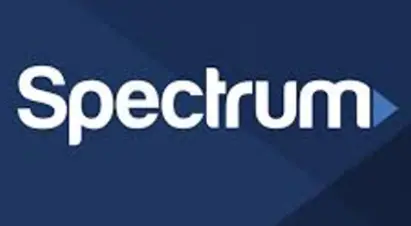
Advertisers above have met our
strict standards for business conduct.


